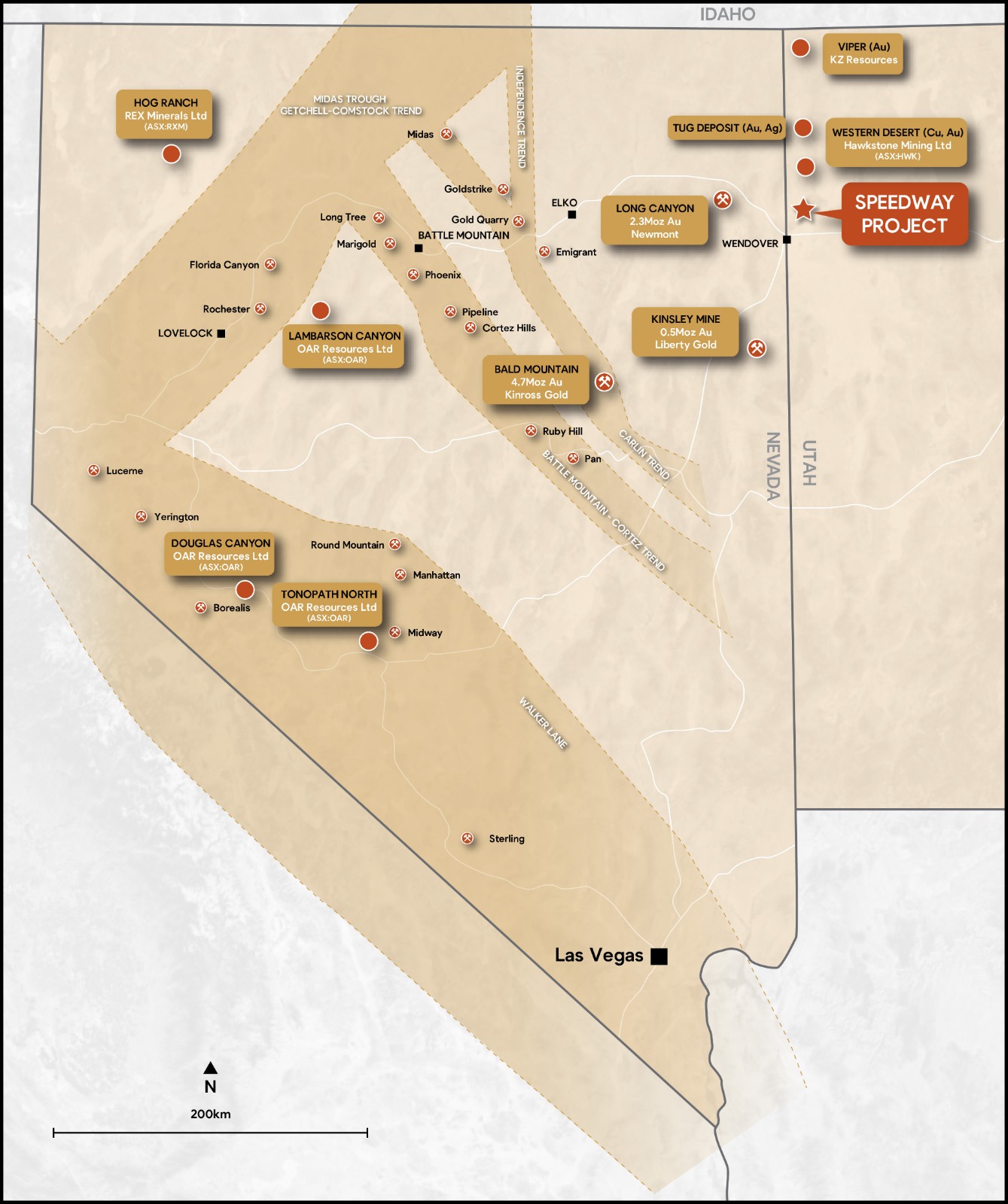SPEEDWAY PROJECT

Key Points
- Located only 40km’s SE of the Long Canyon Gold Mine (2.3M oz), a ‘Carlin style’ deposit in eastern Nevada owned by Newmont Corp.
- The Speedway Project is considered highly prospective for gold where the Company is targeting gold mineralisation in similar stratigraphy to Long Canyon.
- Long Canyon is a Carlin Type gold deposit that is not on the Carlin Trend, but in the shelf carbonate sequence that extends east of the Carlin Trend and into Utah. The discovery of a significant gold deposit so far east of the Carlin trend has raised awareness of the potential of far western Utah to host similar gold deposits as the Carlin Trend and Long Canyon.
- Due diligence sampling completed with results confirming the existence of multiple mineralised outcrops with strongly anomalous gold values associated with brecciated and altered limestone rocks.
- Acquisition includes historical database of over 800 historic rock chip samples with very limited follow-up testing of identified gold rock chip anomalies – strongly anomalous gold sample results over 2.5kms of strike.
- Much of the historic work pre-dates the discovery of Long Canyon and hence the significance of limestone breccias carrying gold mineralisation may not have been fully understood (based on the Long Canyon model).
- Further exploration work consisting of mapping and significant soil sampling will commence shortly with the aim of developing drill targets to be tested in Q2 2021.
GEOLOGICAL SETTING AT SPEEDWAY
The Speedway project is in the Leppy Peak Quadrangle in Tooele County, Utah. At Speedway, the geology[1] consists of an extensive Palaeozoic section which encompasses rocks of similar age to Long Canyon. The stratigraphy has been tilted to the north west thereby exposing a stratigraphic section of rocks from Pennsylvanian to Cambrian in age.
Long Canyon occurs in rocks of Devonian to Cambrian in age where there is a major unconformity between two stratigraphic units such as the Ordovician-Cambrian boundary.
Delecta plans to re-map some of the key areas where gold anomalies have been defined to refine the interpreted geologic map to assist target selection for drilling.
Due diligence field work carried out by Delecta in December 2020 observed:
- Dark grey, fossil rich-poor, calcareous, well bedded limestone.
- Minor interbeds of sandstone, siltstone, and dolomite.
- Well bedded limestone dips uniformly moderately W-NW.
- Minor localized folding.
And with respect to alteration and possible mineralisation, most of the alteration at Speedway is observed as oxidation, bleaching, silicification, and brecciation along bedding planes, lithologic contacts, and faults, including:
- Strong silicification at Speedway occurs in the form of pervasive replacement “silica bodies” or “jasperoids”.
- Lesser silicification noted as “siliceous” appear as drusy quartz along fractures or euhedral quartz growing in open space “vugs” or “vuggy”.
